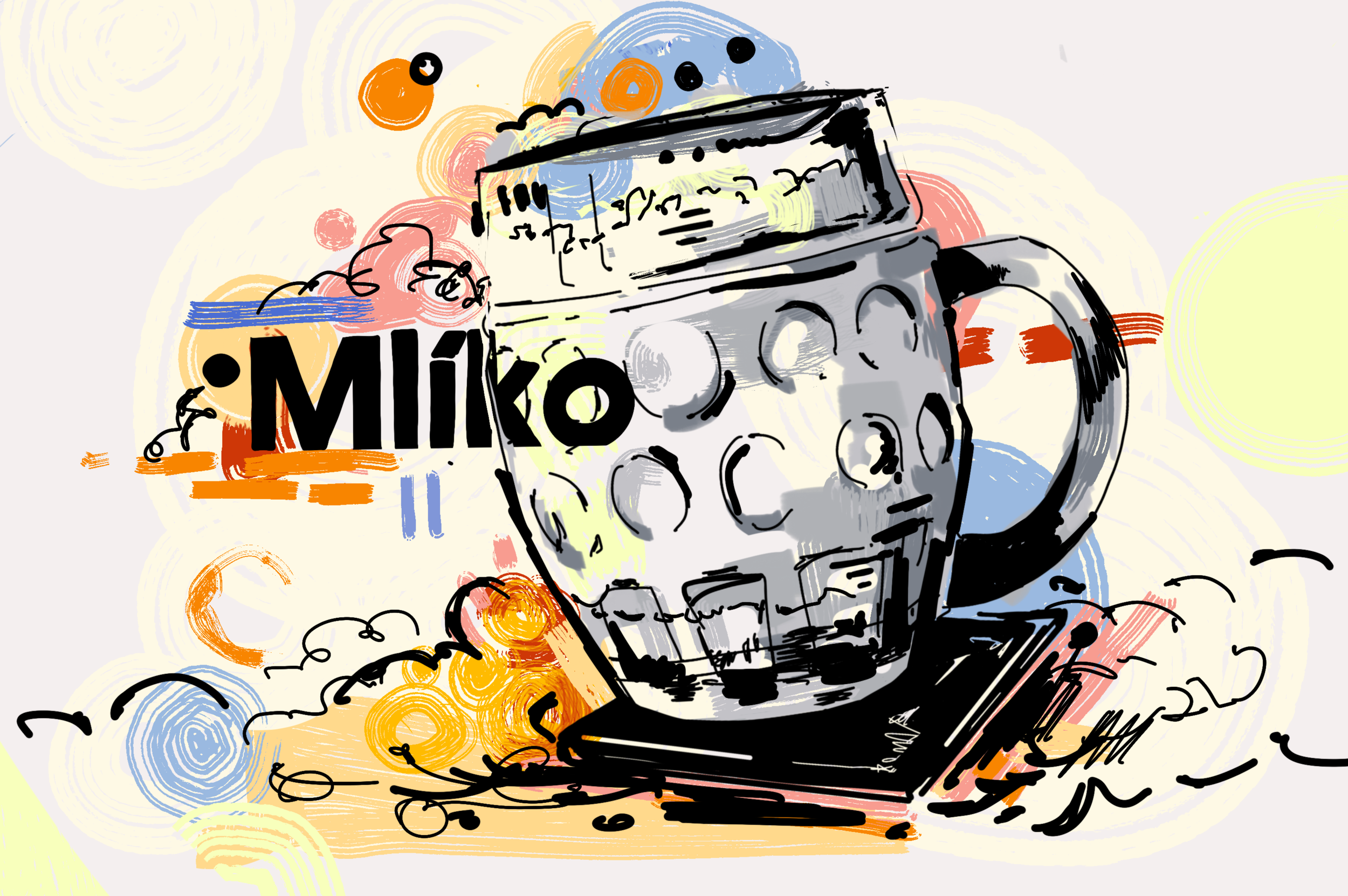For about six months now, I’ve been wondering how to write about mlíko, and I still don’t have a good answer.
In part I have trouble figuring out what to say because the terminology—both normal words and jargon in two languages—feels overly complex. People will point out that mlíko is the Czech word for milk, but that’s not quite right: The Czech word for milk is actually mléko, while “mlíko” is a common slang pronunciation. Lager cultists will explain that mlíko is the name of the all-foam pour that comes out of a Czech side-pull (or side-pour) tap, and that’s correct enough, but the Czech term for a side-pull or side-pour faucet is Lukr kohout (“Lukr tap”), after Lukr, the company that makes them, and that doesn’t have any connotation related to “side” in it. (And for what it’s worth, the next model of Lukr’s ball-valve tap has a handle that rotates over the top, back to front, which means there’s even less “side” to that one.)
But that’s not the question that I don’t know how to answer or the subject I can’t figure out how to address. Where I get stuck is when people ask me if mlíko is authentic.
What is authentic? My “New Shorter Oxford English Dictionary” offers the following definitions, all stemming from the Greek word authentikos, meaning “principal” or “genuine”:
1. Of authority, authoritative, entitled to obedience or respect.
2. Legally valid, legally qualified.
3. Entitled to belief as stating or according with fact; reliable, trustworthy.
4. Real, actual, genuine, original, first-hand; really proceeding from its own stated source, author, painter, etc.
5. Own, proper.
6. Of a church mode: having sounds composed between a final note and its octave. Or a cadence: perfect.
While it’s tempting to follow that last tangent of ecclesiastical musical compositions, we’re obviously thinking about meaning #4, “real or genuine,” possibly also with part of sense #1, “entitled to respect.” Is the mlíko pour real and genuine? Is it entitled to respect?
Take this with a grain of salt, but my hot take for both questions would have originally been: not really. An illustrative example some Czech beer connoisseurs have cited: Go into any hard-drinking hospoda in the Czech Republic and ask for a mlíko. You probably won’t get thrown out of the pub, but you won’t get an all-foam beer, either. They don’t do those.
Of course, authentic isn’t supposed to mean “something that heavy drinkers drink.” Rather, people are wondering if mlíko is “something they actually do where it allegedly comes from,” or as the dictionary puts it, “really proceeding from its own stated source.” In that regard, the answer is more like “yes, but.” Mlíko pours started in the beer-loving Czech lands, without a doubt, and they are done here, but only in limited locations, and always as a specialty, novelty, or party trick. Not quite a gimmick, but not exactly not a gimmick, either.
But after some reflection, I started to think the problem lies with the focus on authenticity.
When I first started writing this post, I fell down a rabbit hole of researching authentic recipes for cooking. I started keeping a list of articles that held that some beloved food or drink should never be made with Ingredient X or through Process Y. For example, larb is “never made with brown sugar” in authentic Lao and Thai cuisine. Fried onions are “the only acceptable topping” for authentic Philly cheesesteaks. An authentic shepherd’s pie is “never made with beef.” Amatriciana sauce is “never made with fresh tomatoes.” The authentic version is not made that way, which means every other version should not be made that way.
I have a lot of respect for old things, but after a while I couldn’t help noting that changes, substitutions, and accidents in the preparation of classic recipes have helped create some very interesting new drinks and meals, many of which are now seen as originals in their own right. For example, you could argue that Japanese tonkatsu is an inauthentic version of a Central European schnitzel, with the not-to-spec panko subbed in for the original European breadcrumbs. Is tonkatsu not delicious in its own right?
Similarly, frozen yogurt is not inauthentic ice cream. It is frozen yogurt.
Or, to put it in beer terms: Baltic Porter is not an inauthentic London Porter. And Baltic Porter is life.
Regardless of authenticity, I think it’s clear that mlíko definitely does not rank as one of the most important elements of Czech beer culture. It is part of serving beer, not making it, a field that is often turned into bullshit for marketing purposes. Think of the Stella Artois “chalice” glass (not traditionally used in Belgium), Heineken Extra Cold (not the right temperature for anyone who cares about how something tastes), or the iceman pour (a reverse mlíko, effectively). Are they completely worthy of respect?
Maybe not, but they’re not the worst things in the world, either. It depends on your perspective. From my own, I’ve finally come to see mlíko differently: with tolerance, even a bit of human kindness. No, mlíko is not traditional, but it is goofy, harmless, and amusing. A few years ago, beer writer Joe Stange said something similar about glitter beers (remember those?), and I think that’s where I am with mlíko today. Maybe it is not the way most Czech people drink their beer, and it is not something you can find everywhere in the Czech Republic. But it is fun.
Not to be too grim as we head into the coldest months of the year, but it bears repeating: Life is short and often painful. Most people are suffering in ways we cannot imagine. Mlíko might not be full of sounds composed between a final note and its octave, or whatever else the dictionary says the word authentic is supposed to mean. But a bit of fun, with your beer or without, can be a small, good thing.



